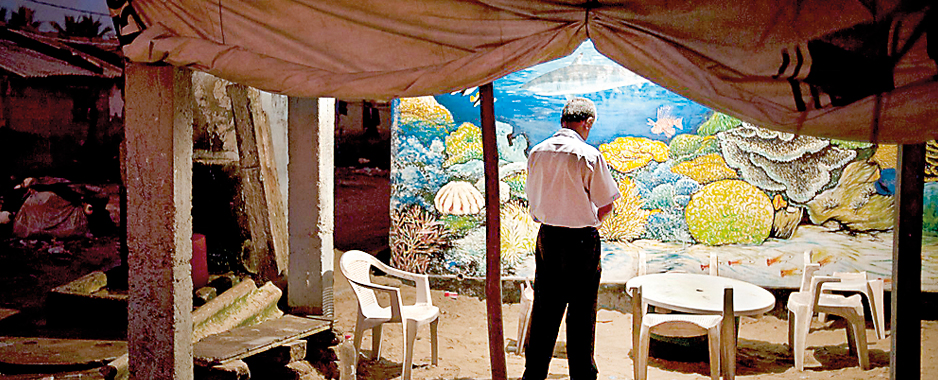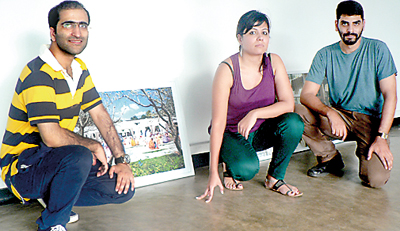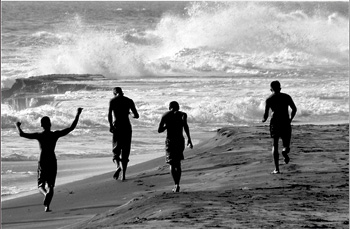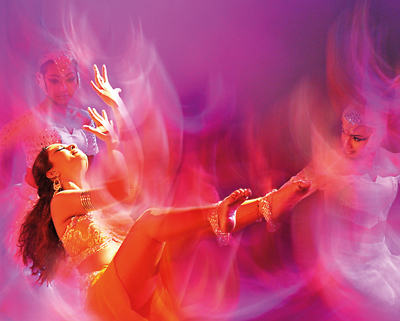Pictures that speak in many voices
Metamorphoses, writes Shehan Karunatilaka in his introduction to the Sri Lankan issue of PIX, “is the past becoming now; the broken becoming the whole as Sri Lanka is transforming, from war porn to tourist brochure; from third world mess to Asian hopeful…It is the dark ages before our renaissance, the difficult puberty that we’re told will pass.’

In the 91 pages that follow, photographers submit their lenses into the service of this one theme. To Jagath Dheerasekara ‘Metamorphoses’ lies in the inscrutable, masked faces of the women in a public hospital’s burn unit, to Dominic Sansoni it is among the wedding guests in a hall in Colombo 13. With Alefiya Akberally we wait alongside the women of the Bohra community for the Dai al-Mutlaq to arrive, and with Aaron Burton we go fishing at dawn off Arugam Bay. Stephen Champion leaves us to follow the trickle of blood that leads into a shop full of corpses and Dipti Desai asks us to imagine what lies behind the tidy, pretty windows of Colombo houses.
Abby Robinson is ignored by the actress looking into another camera. Q.Sakamaki steps into a shop where we find posters of Tamil martyrs for sale. Kannan Arunasalam stands behind Bala Tampoe as he addresses a rally, Timothy Barco looks into the face of Ravi, who runs a small tailoring shop in Batticaloa. Olivia Bonal Sansoni takes a picture of a picture of the brave, late Cpl. Gamini Kularatne; Indunil Munasinghe captures his wife standing smiling behind him. A heavily moustachioed officer stands on the beach and poses for Yannik Willing. Devaka Seneviratne contemplates petrol sold in coke bottles and the two lovers at Galle Face stay hidden by their umbrella from Avanti Tanya. Deshan Tennekoon and three workers look on as a van churns through the flooded streets of Colombo. Liz Fernando lives in her father’s memories of Trincomalee and the ghosts of four ‘dead’ girls flutter and blur, trapped in the lens of Ruvin de Silva’s camera.
In a wonderful collection of photographs, the PIX team share some of the extraordinary work that has been done by photographers in Sri Lanka. Having generated the theme in conversation with locals, they then threw open the submissions to the general public. The resulting selection is a lovely blend of photographers of both genders, of different ages and ethnicities and as a result it is a collection that speaks in many voices.
“We wanted people to work in different forms and in different ways even within the field of photography,” says Mridul Batra, a founder member of photographers collective Lucida which works with PIX.

The organisers of Metamorphoses: (l-r) Mridul, Tanvi and Rahaab
A free photography quarterly, PIX is supported by the Japan Foundation. They are here thanks in part to the enthusiasm and support of the Goethe Institute but also in response to the building curiosity they believe Sri Lanka inspires in the region. For editor Rahaab Allana, the process is akin to taking the pulse of contemporary photography in Sri Lanka. Though largely unrepresented and overshadowed by their more populous neighbours, Rahaab wanted to see the modern photography scene in Sri Lanka had produced.
Their theme, so open to interpretation, has allowed photographers to go beyond news and documentary photography which has tended to dominate the photo archives dedicated to Sri Lanka. “Looking at an event, such as a civil war, such as a civil unrest, is one way of capturing a moment in time of your country, but it’s not the only moment you need to capture or portray,” says Rahaab.
Tanvi Mishra, who is part of the Editorial team at PIX, points out that the work of Stephen Champion and Q. Sakamai were in some ways “the more obvious answers to a question of metamorphoses coming from a country like Sri Lanka which has had such an active, recent history of civil unrest.” For her, Ruvin de Silva and Liz Fernando, with their fictionalised photographic narratives brought something essential to the table. “It reminds us that even if there is a war going on, there are also other creative endeavours going on and we ask ourselves ‘Should everything be overshadowed by the war?’
In an interesting tactic, the PIX editors paired local photographers with local writers – choosing Sanjana Hattotuwa to meditate on Jagath Dheerasekera’s work, pairing Ramya Chamalie Jirasinghe’s poetry with Dipti Desai’s photographs and having Indi Samarajiva dream up a story that tied Ruvin de Silva’s dead girls together. (Other contributing writers include Masii, Shruthi Mathews, Sasanka Perera and Roel Raymond.) For Tanvi some of the most absorbing collaborations are those that give the photographs an entirely new direction.
“For us, it’s almost like discovering a new community,” says Tanvi. “We’re so very interested in seeing how people respond to this collection of work.”
Rahaab takes pains to emphasise that “This was not meant to be ‘the’ Sri Lanka issue, in the sense that is not the only Sri Lanka issue that is possible.” For his part, he knows that this is just the beginning of the world’s interest in Sri Lankan art and culture. “Colombo has had its biennale now. It’s part of the big, bad world. It’s inevitable that Sri Lanka will open up,” he says.
Metamorphoses, the exhibition is on at the Harold Pieris Gallery, Lionel Wendt Art Centre from October 13 – 19. Copies of the Sri Lanka issue of PIX will be available for free both at the venue and at the Goethe Institute. Find out more at www.pixquarterly.in
Follow @timesonlinelk
comments powered by Disqus






















